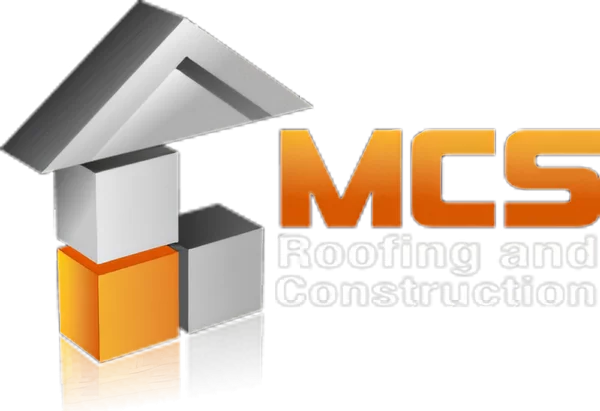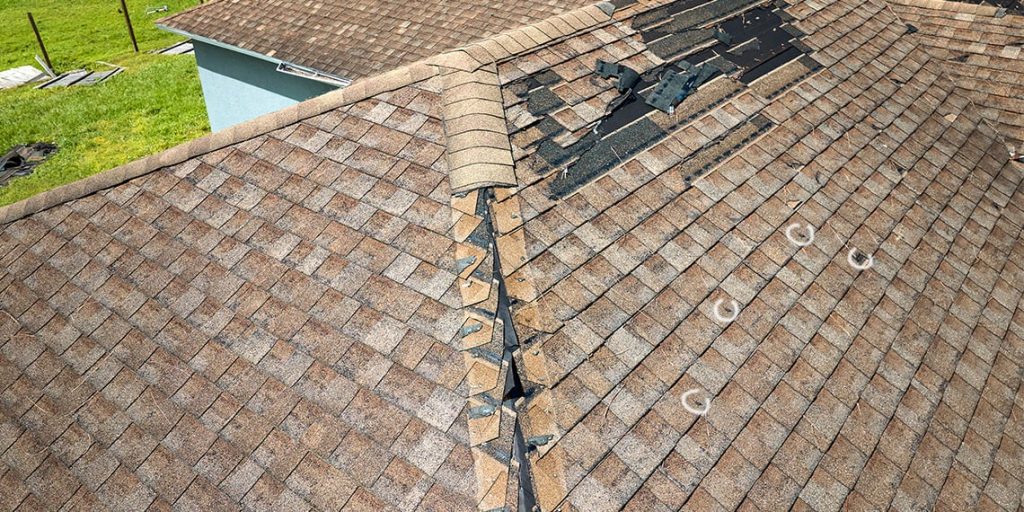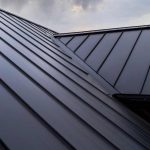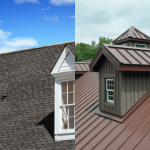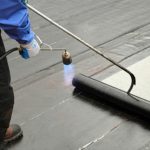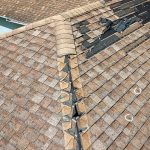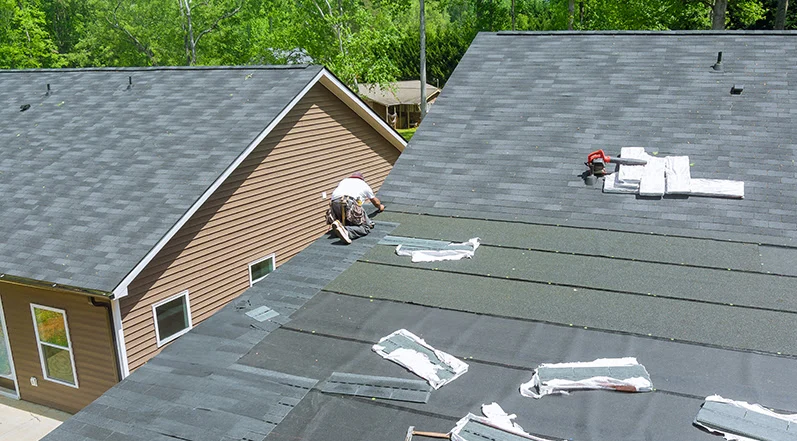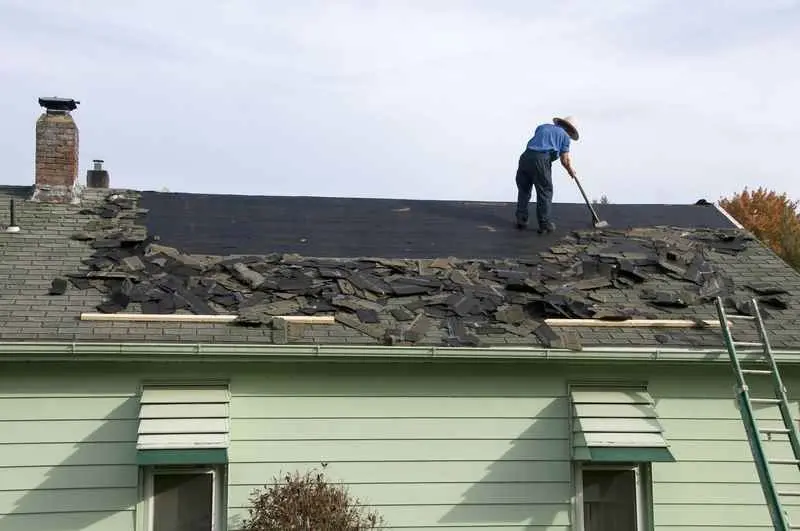When a big hailstorm hits, you might not think anything about the damage first, but once the storm passes, the signs of damage start to appear everywhere. Sometimes, you notice dents in your car, and sometimes you find scattered and torn-up leaves in the yard. But sometimes, there are even bigger problems, like your roof being completely damaged and destroyed.
However, the tricky part is that not every hailstorm means you need a new roof. All roof problems show up the same way and require immediate repair or replacement. So, how can you tell if you have a real roof problem? When to worry and how to get it fixed?
Today, we are going to discuss all this and much more… so stay tuned to read everything about hail damage roof repair and hail damage roof replacement.
Hail Damage Roof Repair – How to Spot Without Climbing on the Roof?
Climbing on the roof and scaling on ladder is quite scary for some people. So, it’s not necessary to do it unless you feel some more serious issue. You can get a clear idea whether your roof took a hit from a storm by observing these signs at ground level.
- Dents or dimples in metal downspouts
- Pockmarks on your garage door
- Holes or tears in window screens
- Chips or dents in painted trim, shutters, or siding
- Tiny splatter marks on electrical meters, air conditioning units, or grills
- Mailbox dents or chipped paint
- Obvious hail damage on your car
Look out for these signs after every hailstorm, so you can prevent the damage early before it worsens.
You May Also Like: Torch Down Roofing Guide – Benefits, Installation, Types, and Much More!
Roof Hail Damage Clues to Look for
If you or your roofing professional can inspect clues from above, watch out for these:
-
Shingle bruising:
Soft spots where the asphalt has been crushed beneath the surface
-
Loss of granules:
Bald patches where protective granules are gone, exposing the black under layer
-
Cracks or fractures:
Visible breaks in the shingle surface
-
Dents in Flashing, Vents, or Chimney caps:
These metal components show hail damage more clearly than shingles sometimes
-
Gutter Dings:
Hail will often leave marks along the edge of your roofline
Ignoring Roof Hail Damage Repair Can Cost You Later
Hail damage doesn’t cause instant leaks, probably. That’s why many homeowners neglect it and do not take it seriously.
But the real danger happens with time after more rain and storms.
Remember, when you don’t deal with the damage timely manner, here’s what happens:
- Damaged shingles lose their waterproofing and become brittle
- Small cracks let in moisture, which spreads under the roofing
- Underlayment and decking can rot
- Future storms make the damage worse
You May Also Like: Hail Damage Roof – How to Identify Hail Damage on Your Roof?
Insurance Hail Damage Roof – Two Common Types
Homeowner’s insurance can cover the hail damage. There are two common coverage types.
1.Actual Cash Value:
Actual cash value pays for your roof’s current value after its depreciation. For example, if your 10-year-old roof is damaged, you may get less money than it actually costs to put a brand new roof.
2.Replacement Cost Value:
In this type, you may get the full cost for your loss or hail damage roof replacement. You can replace the new roof with one of similar quality and price.
How Long Do You Have to File a Hail Damage Roof Insurance Claim?
Well, the good thing is, most insurance companies do not drag this on forever. They give you about 1 year from the date of the storm to file a claim. In case you missed the deadline, you could be stuck paying the entire bill yourself.
Most insurance adjusters use weather data and hail maps so they can confirm the possible date of a storm in your area. That’s why they might not “take your word for it” and rely on their own information and resources.
Average Insurance Payout for Hail Damage Roof
Hail damage roof insurance in Washington varies. Though you can expect an insurance payout of around $10,000 to $15,000, with many claims landing near $12,000. However, your actual payout will depend on the condition of your roof, overall policy, and the severity of the damage.
You May Also Like: Wind Damage Repair Tips – What to Do If a Storm Damages Your Roof?
Costs to Expect for Hail Damage Roof Repair or Replacement
The costs may vary depending on your location, roof damage, and other factors. However, some ballpark figures are:
- Minor repairs – A few hundred dollars
- Moderate repairs – $1,000 to $3,000
- Full replacement – $8,000 to $20,000+ depending on size and materials
How Much Hail Damage to Replace Roof?
Another common question that most homeowners in Washington ask is, How much hail damage does it take to replace a roof?
The truth is, it’s not about how many hail hits your roof takes, it’s about how big the hailstones are and how much damage they have caused.
Follow this general rule:
- Hail 1 inch in diameter or larger (about the size of a quarter) is usually enough to damage asphalt shingles badly enough to justify a roof replacement claim.
- Hail 2 inches or more (golf ball size or bigger) can cause immediate shingle fractures, cracked tiles, or punctured metal roofing.
What to Do After a Hailstorm?
Your game plan should be:
-
Stay safe:
Wait until the storm passes and avoid climbing on wet or damaged roofs.
-
Look for ground-level signs:
Check your home, car, and yard for hail impacts.
-
Take photos:
Document dents, broken screens, or anything that looks unusual.
-
Ask neighbors:
If others in your area have roof damage, that strengthens your case.
-
Call a trusted roofer:
Have them inspect and confirm damage before contacting insurance.
-
File your claim quickly:
Include photos, inspection reports, and any receipts for temporary repairs.
-
Meet with the adjuster:
Your roofer can often be there to point out less obvious damage.
Final Thoughts – Get Help from Hail Damage Roofing Company
If you have just experienced a hailstorm and are not sure what kind of repairs your roof needs, it’s time to get help. Don’t leave your roof’s condition to guesswork.
A trusted hail damage roofing company like MCS Roofing can inspect, document, and handle repairs or replacement so your home stays protected — and your insurance claim gets the best possible outcome. So, don’t wait until the leak gets worse.
You May Also Like: 4 Popular Types of Metal Roofing
